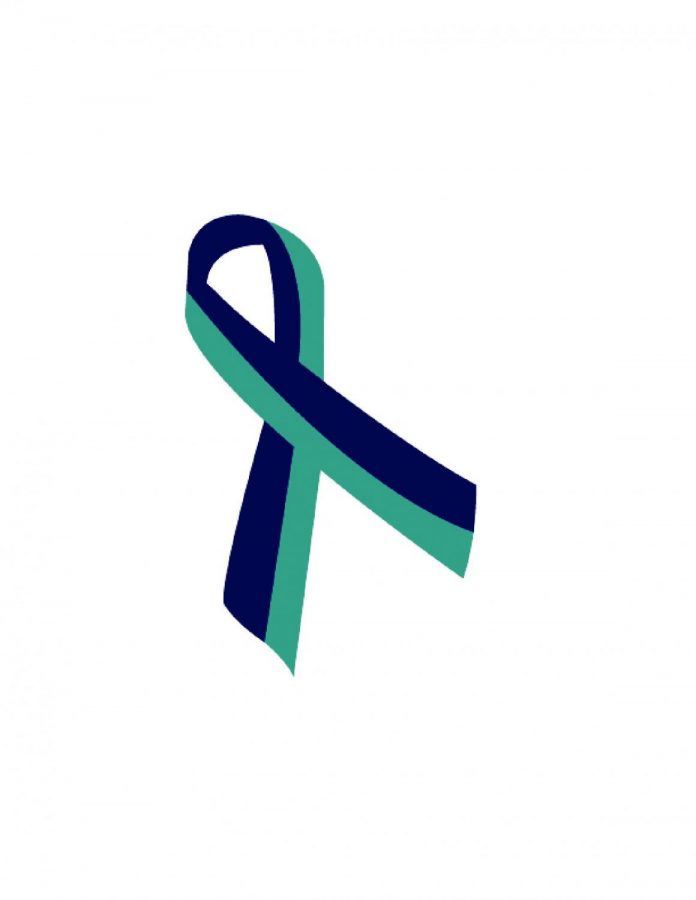Widespread Loss of Lives
Suicide Rates on the Incline Across the Nation and in Our Own Community
Illustration by Jonathan Callison
The turquoise and purple ribbon represents suicide prevention.
February 4, 2019
In classrooms, group chats, and across social media in its entirety, suicide is consistently on the minds of the people. Whether brushed aside as colloiquial banter, or taken seriously, suicide is the hot topic of the generation. On average, there are approximately 129 suicides per day in the United States. Suicide rates are climbing mercilessly, the question is, why?
Though suicide remains as the tenth leading cause of death nationwide, a significant increase of its rate can be found in 49 states, 25 of whom are experiencing the increase by more than 30 percent; including Michigan, according to Rachael Rettner of Live Science. This drastic difference can be more prominently found in rural areas, such as the Upper Peninsula’s Ontonagon, Gogebic, aIron, and Mackinac. These areas, as well as numerous other counties in the Lower Peninsula, specifically in less populated regions, have shown a 17.7 to 25 percent increase in suicide rate as of 2016, in comparison to the record of 1999 according to a graphic from MLive. The same effects of isolation are seen on a national scale, as well in North and South Dakota, where populations fall below one million. North and South Dakota are among the eight states that have had a 40 percent or higher rise in suicide rate as a cause of death from 1999 to 2016.
However, through comparison of the rate increases throughout Michigan’s counties alongside population, lower population does not correlate directly with higher suicide rates; it cannot be the sole factor. Counties that have experienced a 14.1 percent or higher increase in suicide rate tend to be of lower populations below 8,000 people. However, with respect to the mid-range populated counties such as Chippewa, Charlevoix, and Antrim, who can swing in either way, leaving the population size improbable to be determined as the sole factor. Which brings into question as to what, atop of isolation, is bringing the people of Michigan, and those of the United States, to fall at their own hands.
As of 2017, 51 percent of suicide was by firearm. Nine out of 10 suicide attempts involving a firearm resulted in death. While Detroit and Flint receive a great deal of recognition for gun violence, the problem of gun violence does not solely reside in the inner cities. Of the 1,689 gun deaths in northern Michigan between 1999 and 2014, 90 percent were related to suicide. These statistics from The American Foundation of Suicide Prevention bring into question whether these statistics are anything to worry about in Michigan. The fact the matter remains to be the same now as it was in 1999-2016. This is something the world has to worry about. The rising rate of suicide in the United States should be a wake up call to the importance of mental health. Reaching out to those who pull away and recognizing in oneself when suicidal thoughts start to surface could make all the difference in the rates.
“Seek professional help if someone is talking about suicide or tell a trusted adult,” said Dohm. “If someone is considering harming themselves, being a good friend doesn’t mean you should keep it a secret. You should get them help. Be direct and ask them if they are feeling suicidal. If they say yes, then tell their parents or a professional. Some students feel more comfortable remaining anonymous using Ok to Say on our website.”
Though it is one of the hardest things to do, Dohm advises to watch for risk factors. Common signs and risk factors can include a discontinuation of activities the person enjoyed, an isolation from peers and family, change in sleep patterns, as well as possible mood swings. It is important to reach out if one notices a peer, family member, or others demonstrating any of these warning signs. Be the person who can help.
The Suicide Hotline can be reached 24 hours at 1-800-273-8255

